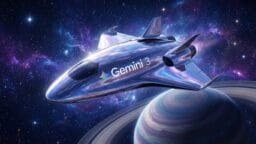Tech Giants Surge with Record Revenues and Ambitious AI Investments
Leading technology enterprises Microsoft, Meta, and Alphabet (Google) have unveiled unprecedented quarterly earnings, alongside a concurrent rise in capital expenditure predictions, predominantly aimed at bolstering artificial intelligence (AI) infrastructure.
This acceleration signals a profound commitment to the long-term development and scaling of AI capabilities.
The enhanced investment strategy emerges from an essential need to augment capacity in anticipation of imminent technological breakthroughs and surging market demands.
Mark Zuckerberg, CEO of Meta, articulated during an analyst call, “I think that it is the right strategy to aggressively front-load building capacity, so that we are prepared for the most optimistic cases.”
This pronounced uptick in spending aligns with significant financial achievements. The investments aim to expand data center capabilities and foster additional AI-driven initiatives.
This trend reflects a broader industry commitment to secure computational resources that underpin cloud ventures, AI-enhanced advertising frameworks, and next-generation AI applications.
Expenditure Surge Accompanies Revenue Growth
Meta has revised its capital expenditure outlook to between US$70 billion and US$72 billion for the fiscal year, an upward adjustment from a prior estimate of US$66 billion. Susan Li, CFO of Meta, indicated spending is anticipated to be “notably larger” in the upcoming year.
This financial commitment is buoyed by third-quarter revenues of US$51.24 billion, denoting a robust 26% rise year-over-year. Meta has confirmed that investments in AI are bolstering its advertising and virtual reality sectors.
The company has also expanded its recruitment of AI specialists, concurrently reducing its workforce by 600 positions to enhance team efficacy.
Alphabet, parent entity of Google, has adjusted its 2025 capital expenditure forecast to a range of US$91 billion to US$93 billion, up from an earlier estimate of US$75 billion. This shift followed record third-quarter revenues of US$102.3 billion, marking a 33% increase year-over-year.
A significant portion of Alphabet’s expenditures will support data center enhancements and AI initiatives. The cloud division notably reported US$15.15 billion in revenue for Q3 2025, reflecting a 35% growth from the same quarter in 2024.
Google’s AI platform, Gemini, is reported to have expanded its user base to 650 million active monthly users, up from 450 million in the previous quarter.
Lastly, Microsoft disclosed US$77 billion in revenue for the quarter ending September 30, an 18% increase compared to the previous year, with cloud revenues climbing by 26%.
The company’s capital expenditures surged to US$34.9 billion for the quarter, nearly US$5 billion above forecast and a staggering 74% rise from the same period last year.
Amy Hood, CFO of Microsoft, noted that overall spending is set to “increase sequentially,” with growth anticipated to surpass that of fiscal year 2025.
These escalating expenditure plans have instigated unease among analysts regarding the potential for an AI market bubble.
Concerns have intensified following formidable, multi-year infrastructure announcements, including Nvidia’s conditional US$100 billion investment pledge to OpenAI, contingent upon deploying 10GW of AI data centers.
OpenAI, for its part, has revealed intentions to develop 30GW of computing resources estimated to be valued at US$1.4 trillion.
Microsoft’s financial results illustrate the volatility inherent in expansive AI collaborations. The firm, having committed US$13 billion to OpenAI, experienced a US$3.1 billion dip in net income attributed to losses from this investment.

Consequently, Microsoft has indicated its intention to exclude the ramifications of its OpenAI investment from future financial outlooks.
CEO Satya Nadella delineated Microsoft’s infrastructure strategy as twofold: first, ensuring that data centers remain “fungible,” or adaptable, to meet evolving customer requirements; and secondly, engaging in relentless modernization.
“It is not like we buy one version of Nvidia and load up for all the gigawatts we have,” Nadella stated. “Each year, you buy, you ride Moore’s law, you continually modernize and depreciate it, and you use software to grow efficiency.”
Source link: Mexicobusiness.news.





